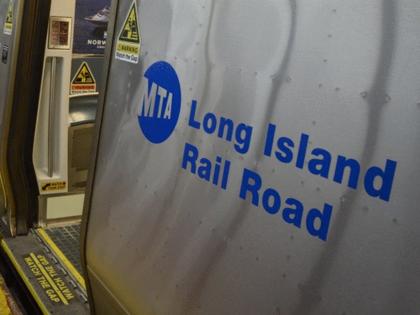NYC Mayor Adams calls on Amtrak to halt East River tunnel shutdown plan
Published in News & Features
NEW YORK — Mayor Eric Adams joined the growing chorus of elected leaders Tuesday calling on Amtrak to halt its plans to close a quarter of the East River Tunnel’s rail tubes for repairs — a project Democrats and Republicans alike worry will wreak havoc on the Long Island Rail Road.
In a letter to President Donald Trump’s transportation secretary, Sean Duffy, Adams called on the feds to “direct Amrtrak to stand down” and adopt a work plan that would keep the tunnel open during the workday.
“Amtrak has refused to listen to reason, even though New York elected officials across the political spectrum — including (Democratic) Governor Kathy Hochul, (Republican) Representative Mike Lawler, and (Republican) Nassau County Executive Bruce Blakeman — have implored Amtrak to come to its senses and back away from this misguided closure plan,” Adams wrote in a Monday letter to Duffy, obtained by the New York Daily News.
The East River Tunnel, owned by Amtrak and first opened in 1910, consists of four tubes linking Manhattan and Queens. Two of the tubes primarily serve the Long Island Rail Road, allowing its service to Penn Station. The other two tubes are used by Amtrak for service on the Northeast Corridor and NJ Transit for storage of commuter trains in Queens’ Sunnyside Yard.
The two non-LIRR tubes were damaged during Hurricane Sandy in 2012, and corrosion from salt water has lead to signal and power problems. Amtrak’s plan has been to shut down the damaged tubes, one at a time, for a 13 months each, starting Friday.
The federal railroad plans a full renovation of the tubes — gutting them and replacing the wiring, tracks, bench-walls and other structures.
But the brass at LIRR — the tunnel’s primary user — say that will overload the remaining three tunnels to the extent that there will be no room for error in the railroad’s schedule.
“The slightest deviation could have significant impacts to our operations reliability, including possible shutdowns of service depending on the issue,” LIRR President Rob Free told the MTA’s board last week.
During the outage, the 461 LIRR trains that use the tunnel each day would need to compete for slots in just three tubes with Amtrak passenger trains headed to and from Boston via the Hell Gate line, as well as out-of-service NJ Transit trains that continue on from Penn Station each morning in order to wait in Queens at the Sunnyside Yards for the afternoon rush.
The MTA has requested that Amtrak opt for a method that would close a tube on nights and weekends only, replacing wiring components and leaving structural portions like the concrete bench-walls in place.
The MTA begrudgingly adopted a similar solution in 2019, averting a planned 15-month shutdown of the L train’s Canarsie line tunnel — which had also been flooded by Sandy.
But in an open letter last week, Amtrak President Roger Harris said the two projects had little in common.
“The differences between the Canarsie Tunnel and the East River Tunnels are substantial,” the Amtrak boss wrote.
“The 12,000-volt AC cables that power trains in the East River Tunnel are encased in concrete bench walls to ensure safety and fire protection, unlike the 600-volt DC cables in the Canarsie Tunnel, which were relocated to wall-mounted racks. Amtrak evaluated the same … approach but found it could not meet required fire ratings or egress space standards.”
In his Monday letter, the mayor pushed back on Amtrak’s assertion, citing a 2020 report by independent experts at London Bridge Associates — who studied similar repairs required on the East River Tunnel’s sister structure, the North River Tunnel between New Jersey and Penn Station.
“(L)eading engineering experts, including London Bridge Associates, have affirmed the viability of an incremental approach that allows the fourth tunnel to remain open during the day, including all rush hour periods, while repairs are done at night and on weekends, thereby avoiding any potential problems,” Adams wrote.
As the plan currently stands, the East River Tunnel’s Tube No. 1 is set to be taken out of service Friday for a week of prep work. The tube will then be put back into service while Tube No. 2 is closed for similar work.
Within weeks, according to Amtrak’s plan, Tube No. 2 will be closed for major construction set to last until 2026.
_____
©2025 New York Daily News. Visit nydailynews.com. Distributed by Tribune Content Agency, LLC.







Comments